A handheld CO2 meter is a device that measures carbon dioxide concentrations in the air. Using infrared sensors called NDIR sensors, a CO2 meter displays CO2 levels in parts per million (ppm) or %vol. These instruments are used for indoor air quality monitoring, HVAC control, greenhouse management, and industrial applications.
Pros |
Cons |
|
✅ Accuracy: Real-time monitoring of CO2 levels with precise measurements . ✅ Portability: Lightweight, compact design for easy handheld operation. ✅ Display: Clear digital readout with backlit screen for various conditions. ✅ User-Friendly: Simple interface for immediate readings and operation. |
⛔ Battery Life: Limited operation time on standard batteries. ⛔ Calibration: Requires periodic recalibration for accuracy. ⛔ Environmental Impact: Temperature and humidity can affect readings. ⛔ Range Limitations: May have restricted measurement ranges. |
What Is The Best Handheld CO2 Meter?
CO2 meter prices have dropped over the past 10 years, so a good unit is relatively cheaper than it once was. Just make sure they are NIST calibrated to ensure maximum accuracy.
- Forensics Detectors CO2 Meters
- CO2 Handheld Meters by CO2 Meter
- Triplett CO2 Meters
- Testo CO2 Meters
- Perfect Prime CO2 Handheld Meter
CO2 Meter Comparison Chart
CO2 meters are offered in many styles and designs. A quick comparison is shown below.
- CO2 Monitor (Wall Mount 110v)
- CO2 Monitor (Battery)
- CO2 Meter for IAQ Inspectors
- CO2 Monitor for Headspace (Food Packaging)
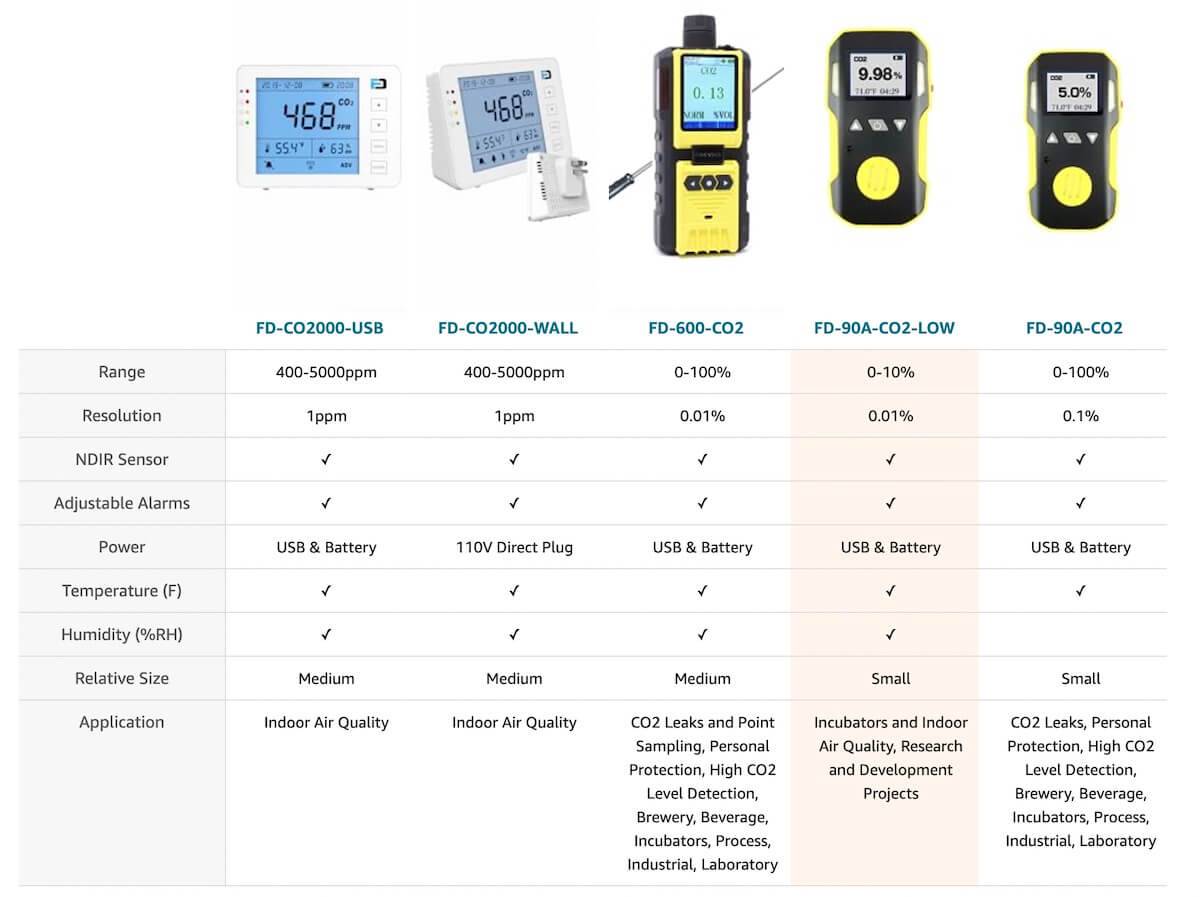
Why is CO2 important for Indoor Air Quality?
Academic studies are showing evidence that elevated levels of CO2 in indoor spaces, specifically below 5,000 ppm, could directly impact human health. Increasing background or outdoor CO2 is not helping. The increasing concentration of atmospheric CO2 may lead to more frequent and prolonged exposure indoors due to higher indoor air concentrations and increased indoor time.
Human health risks include inflammation, impaired higher-level cognitive abilities, bone demineralization, kidney calcification, oxidative stress, and endothelial dysfunction. Surprisingly, even at CO2 exposures as low as 1,000 ppm, there seem to be potential health concerns. The 1,000 ppm threshold is often surpassed in many indoor environments with overcrowding and insufficient building ventilation rates.
It is evident that continuous exposure to elevated atmospheric CO2 could become an underestimated stressor in the modern and future environment and does not seem to abate. If anything, CO2 will continue to amplify in importance and the need to handheld CO2 meter will further increase in demand.

Case Study: CO2 Air Quality in A Hospital
The concentration of carbon dioxide in outdoor air is around 400 parts per million (ppm). In comparison, the human exhaled CO2 breath is about 40,000 ppm (4% vol).
This significant difference in CO2 levels between pure fresh outdoor CO2 air and human exhaled breath highlights the requirement and importance of proper indoor ventilation. Specifically, ventilation in occupied spaces where pathogens can be prevalent such as a hospital or clinic scenario.
Most hospitals maintain ventilation requirements of 2 air changes of outdoor air per hour in accordance with the American Institute of Architects and American Society of Heating, Refrigerating and Air-Conditioning Engineers (ASHRAE) recommendations. This is important to ensure pathogens are continuously diluted with fresh non-polluted air.
The good news is that in recent studies using CO2 meters focusing on COVID-19 wards, the levels of carbon dioxide consistently remained below 800 ppm, indicating adequate ventilation. However, some investigations have shown elevated carbon dioxide levels in hospitals, especially in areas with high room occupancy.
Furthermore, airborne pathogen transmission in healthcare facilities often occurs in ancillary care and outpatient areas where ventilation might not be optimal. Exposures also frequently happen in places like breakrooms, which can be a concern for infection spread.
To address these ventilation concerns a unique study was investigated. Carbon dioxide levels were monitored in various settings throughout an acute care hospital.
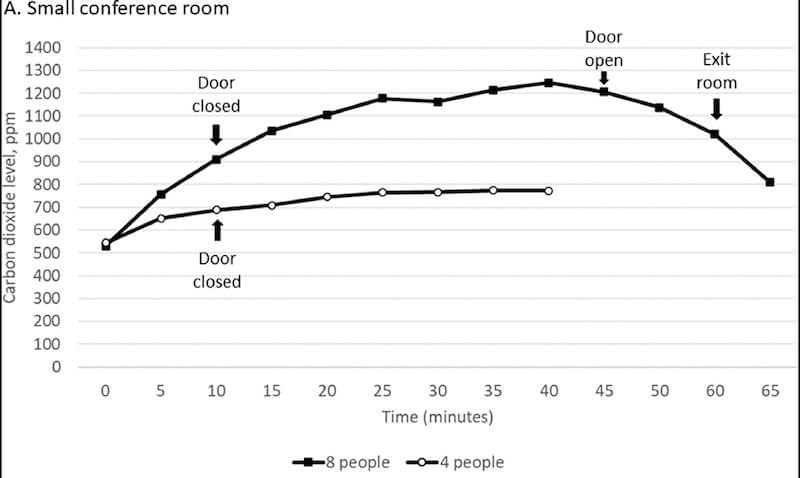
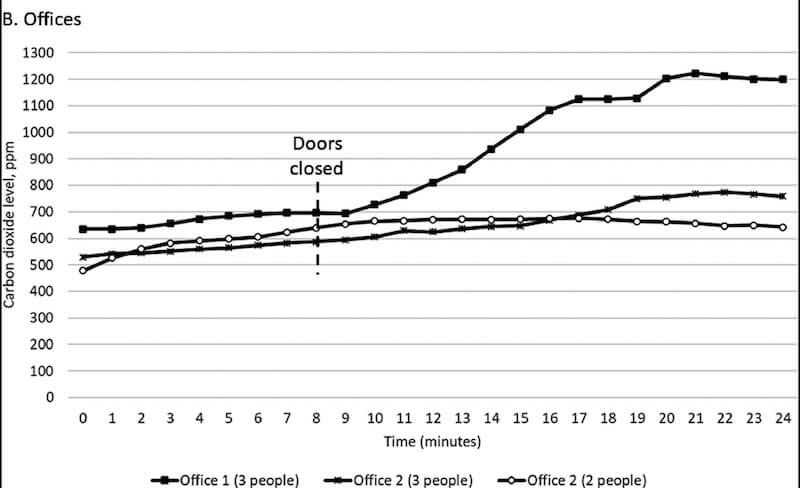
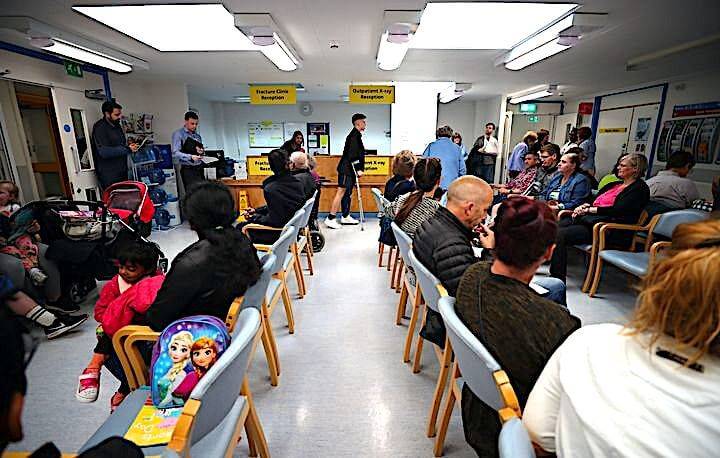
CO2 Levels in Various Parts of a Hospital
| Location (volume m3) | Peak carbon dioxide level (ppm) | Peak # people present | Time period monitored |
|---|---|---|---|
| Main lobby | 577 | 75 | 12 h (7 AM-5 PM) |
| Cafeteria | 756 | 68 | 12 h (7 AM-5 PM) |
| Physical therapy | 552 | 14 | 12 h (7AM-5 PM) |
| Emergency department* | 701 | 20 | 12 h (7AM-5 PM) |
| Elevators (N = 2) (8.5 m3) | 638 | 1 to 6 | 20 min |
| Large conference room (55.5 m3) | 638 | 37 | 60 min |
| Small conference room (31 m3) with overcrowding | 1246 | 8 | 60 min |
| Small conference room (31 m3) without overcrowding | 774 | 4 | 60 min |
| Breakrooms (N = 2) (52 m3) | ≤628 | 3 | 20 min |
| Office #1 (38.5 m3) | 1226 | 3 | 24 min |
| Offices (N = 4) (24.8 m3) | ≤788 | 3 | 24 min |
| Inpatient rooms (N = 5) (43 m3)† | ≤567 | 2 | 20 min |
| Outpatient clinic rooms (N = 5) (24 m3)‡ | ≤709 | 3 | 20 min |
| Bathrooms in patient care area (N = 3) | ≤636 | 2 | 10 min |
| Bathroom in patient care area (N = 1) | 908 | 2 | 10 min |
Study Conclusions
- In one bathroom the carbon dioxide level rose to 908 ppm even with two people present, and they were spaced at least 1.8 meters apart.
- The good news is that in both inpatient rooms and outpatient clinic rooms with an air exchange rate of 6-9 air changes per hour (ACH), the carbon dioxide levels remained below 800 ppm when there were 2-3 people present. This suggests that the ventilation in these areas was effective in maintaining low carbon dioxide levels even with the presence of occupants.
Are Cheap CO2 Meters Accurate?
CO2 Meter accuracy is not dependent on the actual cost of the CO2 meter. In fact, there are many very cheap units that work excellent. The most critical part of a CO2 gas meter accuracy is correct CALIBRATION. Yes, calibration. You can think of calibration as the fine "tuning" process of making a CO2 meter read accurately. If the tuning or calibration process is not done to USA NIST traceable gas sources, then your expensive or cheap meter (irrelevant of cost), will not be accurate!
How can I test my CO2 levels at home?
To test home CO2 levels, you need a handheld CO2 meter. These units all vary in features, but the Handheld CO2 meter here is small and easy to operate with one hand to take your CO2 levels in different parts of your home.
What is the Lifetime of a CO2 NDIR Sensor and a O2 sensor?
CO2 NDIR (Non-Dispersive Infrared) sensors exhibit remarkable durability as they are solid-state components, capable of lasting between 5 to 15 years. The primary component to monitor in these sensors is the IR source, which, although it rarely occurs, may degrade or fail completely. Nevertheless, NDIR sensors are impressive inventions, and their prices have significantly decreased over the past decade due to advancements in micromachining and the miniaturization of electronic components.
In contrast, O2 sensors are of the electrochemical type and not solid-state. They rely on ionic conduction involving a mixture of electroactive solutions. As a consequence, O2 sensors are quite delicate and typically last between 2 to 3 years. Time is the main factor responsible for their degradation, but it's important to note that these sensors may also leak acid, which can lead to the corrosion of sensor plug connections and other electronics in your analyzer. To ensure accurate readings and avoid potential damage, frequent calibration and regular inspections of O2 sensors are crucial.
CO2 Gas FUN FACT!
Did you know CO2 is heavier than air? For consistent comparison results, it is always best practice to take CO2 measurements at the same height whenever comparison room-to-room measurements. Make sure you are consistent when indoor air quality monitoring.
How often must I Calibrate my Handheld CO2 Monitor?
We recommend calibrating between 6 to 12 months. Now please don't forget, gas calibration is all about accuracy. The more often you calibrate, the more accurate your CO2 meter will be reading.
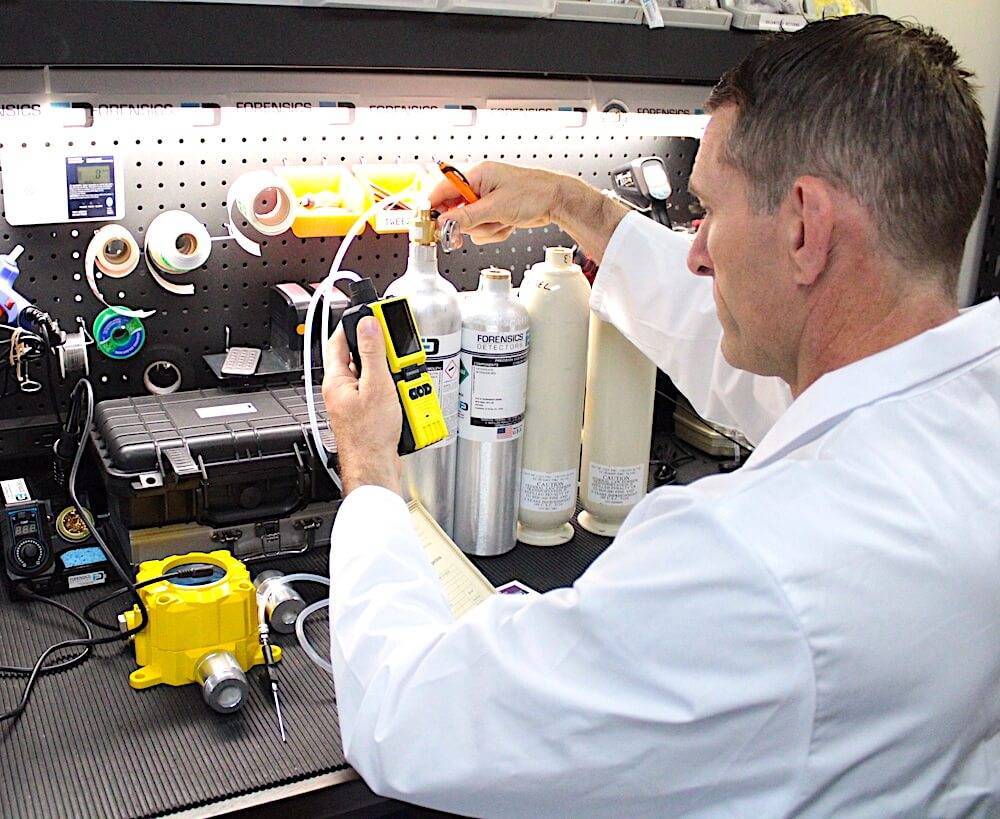
How long will the CO2 Monitor Last?
The good news is that CO2 monitors boast impressive longevity when compared to other gas sensors, like electrochemical cells. They rely on NDIR (Non-Dispersive Infrared) sensors, which are solid-state electronic components known for their extended lifespan, typically lasting between 5 to 15 years. Among these components, the infrared source tends to be the most vulnerable, as it may gradually degrade over time. Hence why we recommend annual calibration.
What is a good CO2 level indoors?
Different agencies provide recommended "good" CO2 levels. But to start with, we must understand that lower is better, and higher is worse. For example, the outdoor CO2 levels is the "freshest" CO2 levels that exist and hover at about 410 ppm. When humans are indoors, due to breath and exhalation this CO2 level increases and gets worse with time (all things being equal). Some examples of permissible CO2 concentration levels are as follows:
California State Assembly Bill AB841:
- Requirement: Classrooms must have CO2 monitors that trigger an alarm at 1,100 ppm.
American Society of Heating, Refrigerating and Air-Conditioning Engineers (ASHRAE):
- Recommendation: Indoor CO2 concentrations in schools should be maintained below 1,000 ppm and below 800 ppm in offices.
German Federal Environment Agency:
- Recommendation: CO2 levels in classrooms and offices should be kept below 1,000 ppm.
Occupational Safety and Health (OSHA):
- Recommended 8-hour Time-Weighted Average (TWA) exposure limit: 5,000 ppm.
Can CO2 Levels Affect Its Smell?
No, carbon dioxide is odorless at all concentration levels.
How Should I Store my CO2 Monitor?
For optimal sensor lifespan and precise measurements during operation, it is advised to store the CO2 monitor in a controlled environment with a humidity level of 50% RH and a room temperature of approximately 70°F.
Conclusion
- A Handheld CO2 meter is an imperative tool to inspect and monitor indoor air quality.
- CO2 meters are widely used in various inspection instances to monitor like classrooms, gyms, workplaces, and offices.
- CO2 meters serve as an excellent indicator of pathogen transmission risk.
- When CO2 levels reach over 1000 ppm they can have negative effects on humans.
- BEWARE: Do not confuse carbon dioxide (CO2) with carbon monoxide (CO) monitoring. They are both two different gases that require each their unique gas detectors.
About The Author
Dr. Kos Galatsis ("Dr.Koz") is the President of FORENSICS DETECTORS where the company operates from the scenic Palos Verdes Peninsula in Los Angeles, California. He is a subject matter expert on gas sensor technology, gas detectors, gas meters, and gas analyzers. He has been designing, building, manufacturing, and testing toxic gas detection systems for over 20 years.

Every day is a blessing for Dr. Koz. He loves to help customers solve their unique problems. Dr. Koz also loves spending time with his wife and his three children going to the beach, grilling burgers, and enjoying the outdoors.
Read more about Forensics Detectors here.
Email: drkoz@forensicsdetectors.com
Phone: +1 424-341-3886

